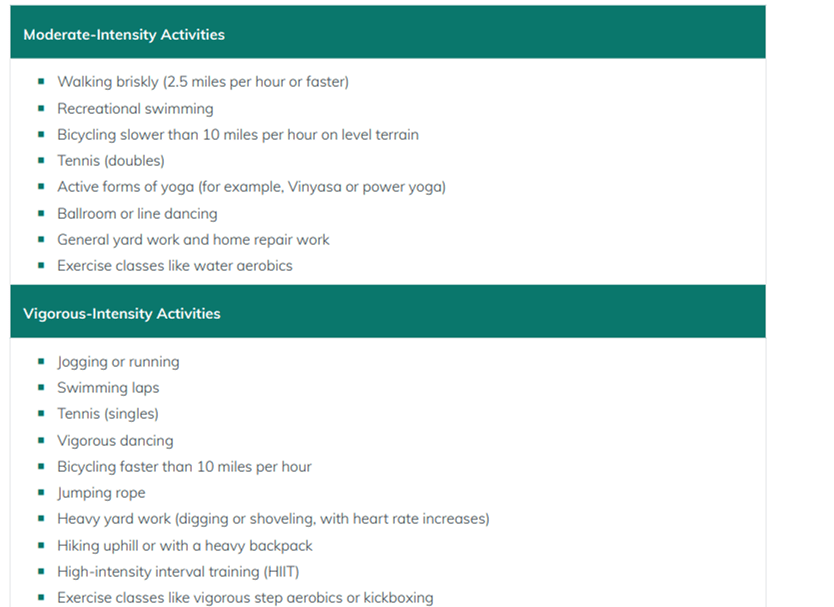There are many research backed steps that you take in your everyday life to improve your mental health, including physical activity (1,2).
Physical activity may be as effective as psychological and pharmacological treatments for depression and anxiety (3,4,5).
But can you get more benefit from exercise if done outdoors, in natural environments?
A recent review tried to answer this question (5).
The results of this review (5) showed that nature based physical activity was more effective for:
Anxiety
- In this review (5), 11 of 16 studies found statistically significant decreases in anxiety following physical activity in a natural environment compared with an urban environment.
Depression
- The review (3) also found 4 out of 12 studies reported statistically significant decreases in depression scores in favor of the natural environment.
Anger
- 6 out of 12 studies considering anger reported statistically significant decreases in the natural environment (5)
Positive affect
- Positive affect improved in favor of the natural environment in six of eight studies (5).
Energy level
- In this review (5), all 12 studies found physical activity in nature was more beneficial for increased energy or reduced fatigue.
How much and how often was outside exercise needed to find benefit?
The amount of outdoor exercise in the review article (3) ranged from 15 minutes and up to 50 minutes, three to five times a week.
What are some caveats?
- Even though this review found natural environment physical activity had more benefits than urban physical activity, it is important to note that some physical is likely better than no physical activity.
- Due to weather, time constraints, geographic limitations, etc, it may not always be feasible to engage in nature based physical
What is a reasonable amount of physical activity or how much should I exercise?
The recommended exercise or activity duration according to The Department of Health and Human Services’ “Physical activity guidelines for Americans” (6, 7):
- For moderate intensity activity, 20 to 42 minutes a day (150minutes to 300 minutes per week).
- For vigorous intensity activity, 10 to 21 minutes a day (75 to 150 minutes a week).
What are some examples of moderate and vigorous intensity activities (exercise) ? (7)
What are some precautions?
- It may be best to check with your healthcare provider to make sure it’s safe for you’re to start an exercise program.
- Individuals with a history of disordered eating or disordered exercise should check with their health professional before exercising.
- It may be wise to stop exercise and seek professional help if you notice:
- Increased depression, disordered eating, and other mental health concerns due to exercise.
- Injury, pain, or decreased motivation
- Obsessive behaviors
- Other symptoms.
- Exercise may not help without proper nutrition, so it may be wise to learn about proper nutrition and proper exercise technique, and exercise/nutrition plans, before starting to exercise.
- It may be helpful to gradually start exercising to give yourself time to adjust to an active lifestyle.
- It might take weeks months or longer for some people to get used to and enjoy the minimum activity guidelines.
- Occasional weeks without exercise or light activity may be important to prevent injury.
- Figuring out what works best for you may give you lasting benefits.
Disclaimer: This article is intended to be informative only. It is advised that you check with your own physician/mental health provider before implementing any changes. With this article, the author is not rendering medical advice, nor diagnosing, prescribing, or treating any condition, or injury; and therefore claims no responsibility to any person or entity for any liability, loss, or injury caused directly or indirectly as a result of the use, application, or interpretation of the material presented.
References:
- u.osu.edu/emotionalfitness
- Patel R. Mental Health For College Students:Practical Life Strategies for Stress, Anxiety, Depression, and More: Backed by Research.
- Cooney, G. M. , Dwan, K. , Greig, C. A. , Lawlor, D. A. , Rimer, J. , Waugh, F. , McMurdo, M. , & Mead, G. E. (2013). Exercise for depression. Cochrane Database of Systematic Reviews, 9. 10.1002/14651858.CD004366.pub6
-
Stubbs, B. , Koyanagi, A. , Hallgren, M. , Firth, J. , Richards, J. , Schuch, F. , Rosenbaum, S. , Mugisha, J. , Veronese, N. , Lahti, J. , & Vancampfort, D. (2017). Physical activity and anxiety: A perspective from the world health survey. Journal of Affective Disorders, 208, 545–552. 10.1016/j.jad.2016.10.028
-
Wicks C, Barton J, Orbell S, Andrews L. Psychological benefits of outdoor physical activity in natural versus urban environments: A systematic review and meta-analysis of experimental studies. Appl Psychol Health Well Being. 2022 Aug;14(3):1037-1061. doi: 10.1111/aphw.12353. Epub 2022 Mar 8. PMID: 35259287; PMCID: PMC9544808.
-
https://www.cdc.gov/physicalactivity/basics/adults/index.htm
-
https://health.gov/sites/default/files/2019-09/Physical_Activity_Guidelines_2nd_edition.pdf
